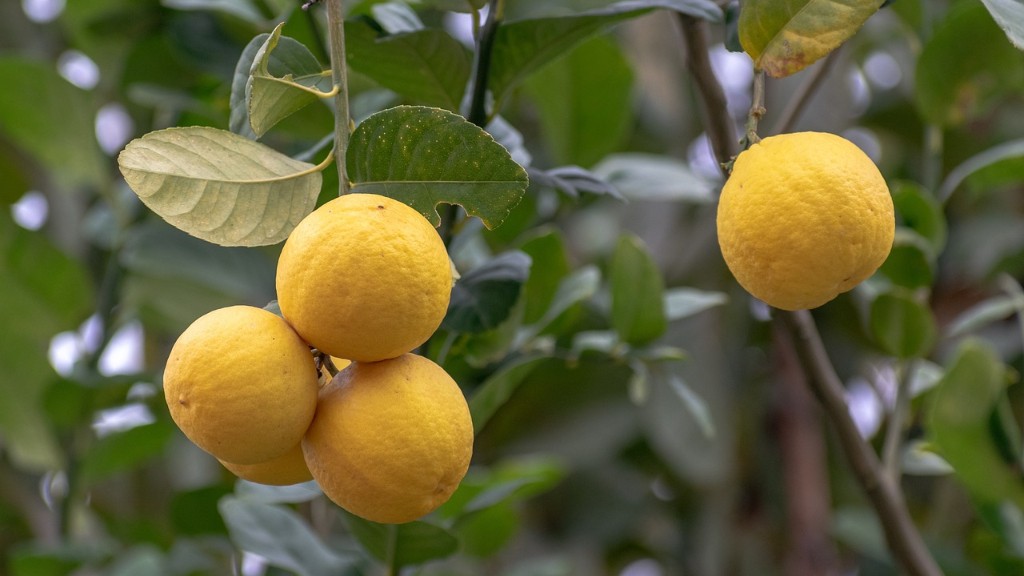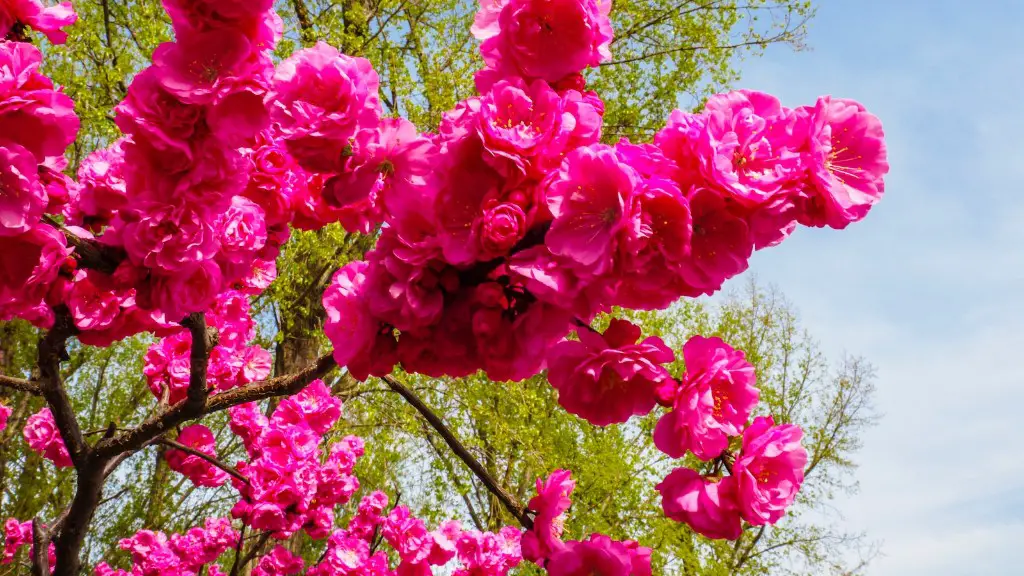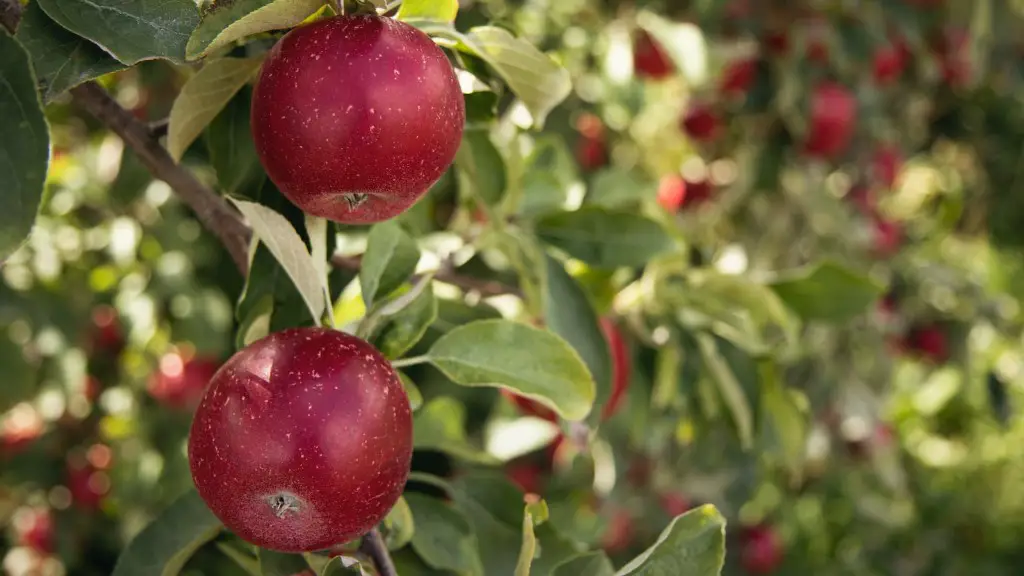When can I plant a lemon tree? The answer to this question varies depending on the climate of your area, but generally speaking, the best time to plant a lemon tree is either in late winter or in early spring depending on the climate of your location. As lemon trees are frost tender and thrive in tropical temperatures, cooler climates should aim for the early spring timeframe for planting. In areas with mild winters, you may be able to plant your lemon tree as early as late January or February. It’s important to remember that although winter can be a great time to start planting, a lemon tree still needs sun, nutrition and water in order to reach its full potential.
If you’re looking to plant your lemon tree indoors, the best time to do so is usually in the late winter to early spring months. Keeping your tree in a pot will allow it to adjust to various temperatures and climates, allowing you to relocate it in warmer months if necessary. Indoor lemon trees need plenty of flexibility and maintenance to get the best results, so be sure to research the best way to care for your tree before you start.
If you’re living in a more tropical climate, the optimum time for planting a lemon tree is usually in late spring. Warmer climates are better for outdoor plantings as the increased temperature is necessary for the lemon tree’s growth. The best time to plant in warmer regions is usually from May to September. During this time, the soil should be moist, but not overly wet which can damage the roots. Be sure to check the soil’s moisture level regularly and water if needed.
No matter the climate, all lemon trees need certain conditions in order to thrive. Ensuring your tree has access to direct sunlight, balanced soil pH and enough water are essential components to a happy and healthy lemon tree. If you can provide these basic requirements, you should be well on your way to harvesting delicious lemons in no time.
Sunlight
One of the undeniable needs of a lemon tree is access to direct sunlight. Whether you are planting indoors or outdoors, it is essential that your tree gets at least 6-8 hours of direct sunlight each day. Without it, lemon trees will not grow as fast and produce fewer fruits. When placing a lemon tree indoors, the best location is often south or east facing windowsills, as this will provide the most consistent sun throughout the day.
The ideal temperature range for a lemon tree is between 60-80°F. When wearing on hotter days, make sure to supplement your tree with shade or shade cloths. Lemon trees can be sensitive to hot weather and too much direct sunlight can burn or scorch their leaves, damaging its growth.
Soil Conditions
It’s critical that the soil you use for planting your lemon tree meets the balanced pH requirements of the tree. Lemon trees prefer a pH level of 5.8-6.2, which is slightly more alkaline than neutral. If you’re in doubt, have your soil tested beforehand to ensure it’s the perfect condition for your tree. Overly acidic or alkaline soil can cause nutrient deficiencies, stunting your lemon tree’s growth and leaving it vulnerable to pests and diseases.
Alongside the correct pH levels, your soil should also be organically rich. While not all lemon trees need fertilizer, adding some natural fertilizers to the soil such as manure, compost or mulch will help nutrient-deficient soil types. Doing this also helps with moisture retention and encourages growth.
Water Requirements
When it comes to water, lemon trees need well-drained soils and consistent watering habits. As mentioned before, you should be able to feel moisture in the soil at all times but not overly wet. It’s best to water your lemon tree in the morning, as it gives the tree time to absorb the water before the hottest part of the day. During the first year of growth, it’s also best to give your tree some extra watering when you can.
If your lemon tree is in the ground, be sure to check the moisture of the soil with a moisture meter. Doing this throughout the summer months will ensure you’re not under- or over-watering your lemon tree. If your tree is potted and indoors, check the soil’s moisture levels daily to ensure you’re not overwatering.
Fertilizers and Pruning
When it comes to feeding your lemon tree, it’s best to give it some natural and organic fertilizers when needed. This should be done a few times a year, once in the spring and again in the summer. Fertilizers should be mineral, nitrogen and potassium-rich, as this helps provide your tree with essential nutrients to stay healthy. Be sure to read the instructions carefully before adding fertilizer to your soil.
Pruning is also an essential part of lemon tree maintenance. As lemon trees tend to be tall and sprawling, a good pruning helps maintain shape and encourage new growth. Prune your lemon tree once per year, when the tree is dormant. Ensure that you remove any dead or damaged branches and leaves, and thin out the canopy to provide the tree with more light.
Insects and Pests
Like other citrus trees, lemon trees can be vulnerable to pests and diseases. The best way to combat this is to keep your lemon tree as healthy as possible, as healthy trees are far less likely to be attacked by pests. Be sure to regularly check your tree for any signs of issues, such as holes in leaves, discoloration or wilting. If you do spot any of these, act quickly to treat the problem or your entire tree could be put at risk.
The most common pests that target lemon trees include aphids, mites and scale insects. If you do spot any pests, use an organic pesticide to try and eradicate them. Be sure to check your lemon tree regularly to ensure the pests have gone, and to prevent any future attacks.
Diseases
Although pests are a common issue that lemon tree owners face, diseases can also be a problem. The most common diseases are caused by fungi, such as root rot, leaf spot and black spot. If you think your lemon tree is suffering from a disease, the best thing to do is to remove it from the soil and pot it. Then, replace the infected soil with fresh soil and ensure your lemon tree is getting the proper care it needs.
It’s also a good idea to keep your lemon tree in an area with plenty of airflow. Poor airflow can cause leaves and branches to be more prone to disease. In addition, plants can be prone to fungal diseases in high humidity. Be sure to monitor the humidity levels around your lemon tree, and if needed, ventilate the area or move your tree to a shadier outdoor space.


